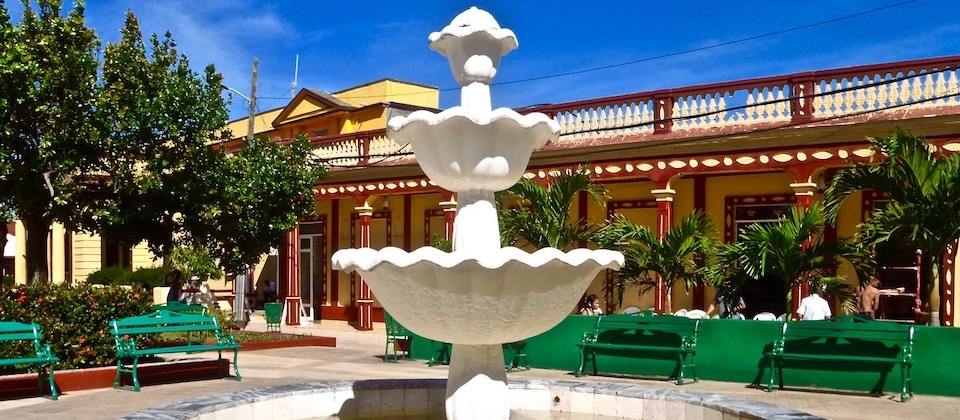
Published on 13 May, 2017.
A lot of travellers are asking whether Baracoa is ready to receive tourists after hurricane Matthew, which pounded our region the night of October 4th to 5th, 2016.
The answer is clear and simple – yes, Baracoa is ready! (Note to reader: except for the photo that shows us protecting our house, all photos and the video in this article were taken after the hurricane.)
Matthew was devastating. Classified as a category 4 hurricane in the Saffir Simpson scale, it entered Cuba with winds at 220km per hour, with some gusts reaching 250km per hour. Its passage over our country lasted for roughly 10 deafening, terrifying hours. Its impact was deep.
Nobody will die
Nobody died in Cuba following hurricane Matthew. Our country has longstanding experience with extreme tropical phenomena, and the government has developed and implemented highly effective preparedness and prevention strategies.
During several days prior to the arrival of hurricane Matthew, people in Eastern Cuba were constantly kept informed by authorities and experts via radio and television.
Mike Theiss, a photographer for National Geographic and internationally known storm chaser and reporter, was in Baracoa during the hurricane and posted this tweet on October 4th: “Officials in Cuba doing a great job keeping everyone informed! Preparations some of the best I’ve seen in any country. #HurricaneMatthew”
Evacuation measures were introduced for families in particularly vulnerable homes and areas.
Two days before the arrival of the hurricane, electrical brigades started arriving from various other provinces, so they were ready beforehand to restore the network when the catastrophe would be over.
The longest night
The population of Baracoa reinforced their homes showing proof of their usual skills and creativity. Many placed heavy sand bags on top of their metal sheet roofs.
At Villa Paradiso, we protected our large window panes as best as we could, with help and solidarity from neighbours and guests.
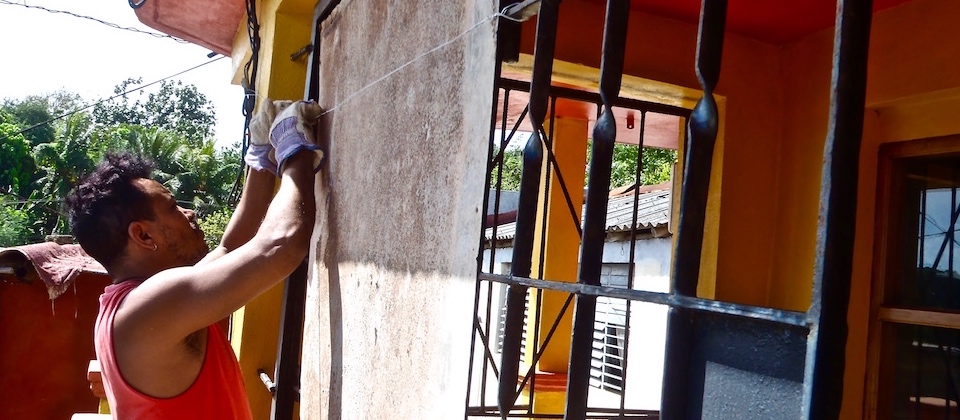
Indeed, two women (one Canadian and one French) and a Mexican man that were staying with us decided to remain in Baracoa and to support us with their arms, legs, minds and hearts. We will never forget them!
Branches are detached, trees fall, metal sheet roofs fly
At 5:30 in the afternoon on October 4th the unleashed winds were starting to take down banana trees. Everyone got inside their homes, respecting the instructions not to come out for any reason whatsoever.
Soon we started feeling objects fly and hit walls, doors and windows. The speed and the frightening howling of the winds didn’t seem to stop growing. Water was rapidly coming in through any cracks that were exposed to the hurricane. Collective work and many towels were necessary in order to absorb, press, dry up…
Sharing – the verb most practised by Cubans
Suddenly, we felt someone desperately knocking at our front door. A neighbour whose roof had just been lifted away left all his loved possessions behind and came to seek refuge with us. Not much later, neighbours from two other houses jumped the fence to come get protection under our roof.
Together, we shared the anguish, but also moderate yet comforting bits of food. A sip of rum helped us to warm up and calm our nerves slightly. It was 11:00 p.m. when the eye of the hurricane arrived to allow us to catch our breath. That peace would last for some 90 minutes, before the pandemonium would start again for several more hours…
A rough awakening
Dawn on October 5th brought about silence and stillness. A cruel daylight placed in front of our incredulous eyes an utterly thorough disaster zone that extended to the horizon. This little paradise called Baracoa looked as if it had been bombarded…
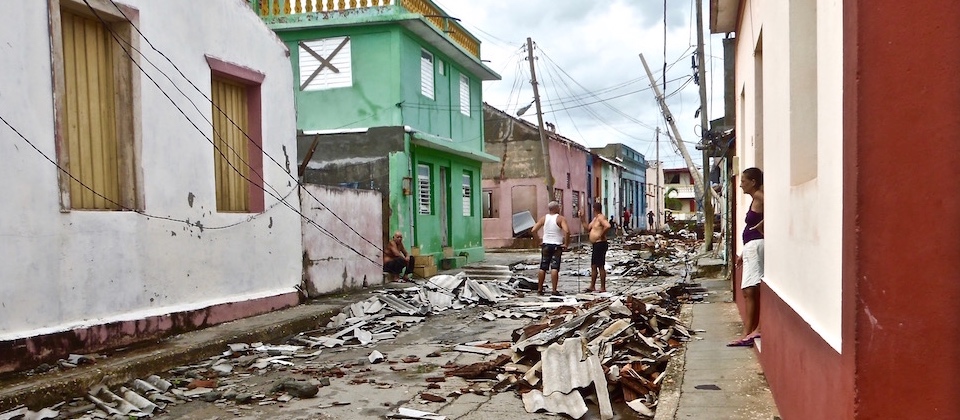
Roughly 24,000 homes out of 27,000 in the region were damaged. The rain over the next few days led to rotten mattresses, furniture and other goods.
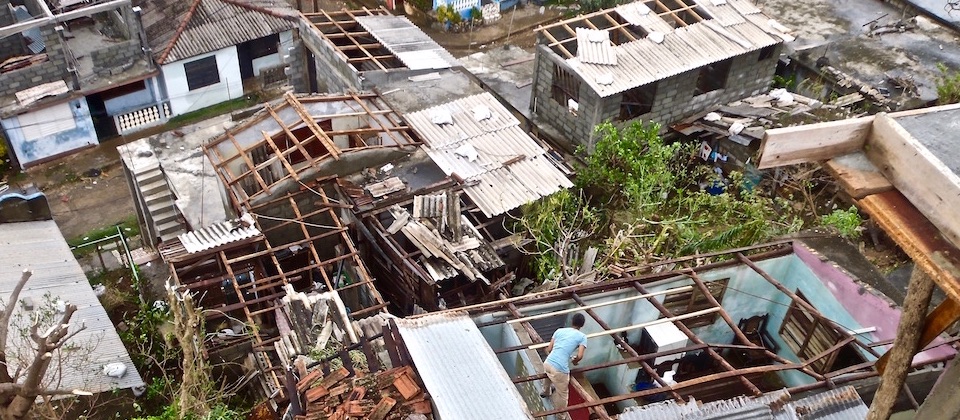
On the Malecón (seaside drive), neighbours laid their clothes and sheets to dry on the pavement, even though the ambient dampness and frothy sea dew continued to wet everything. The previous night Matthew had elicited 7 to 8 meters-high waves that relentlessly crashed on houses and buildings, destroying concrete balconies and walls.
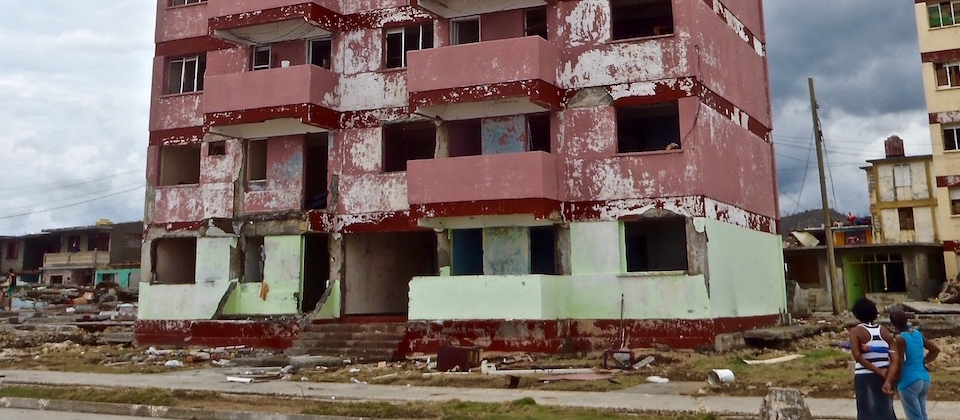
Baracoa gets back on its feet again!
Crews from the power and communications sectors put themselves to the task right away. Electric company employees worked non-stop setting up towers, connecting cables.
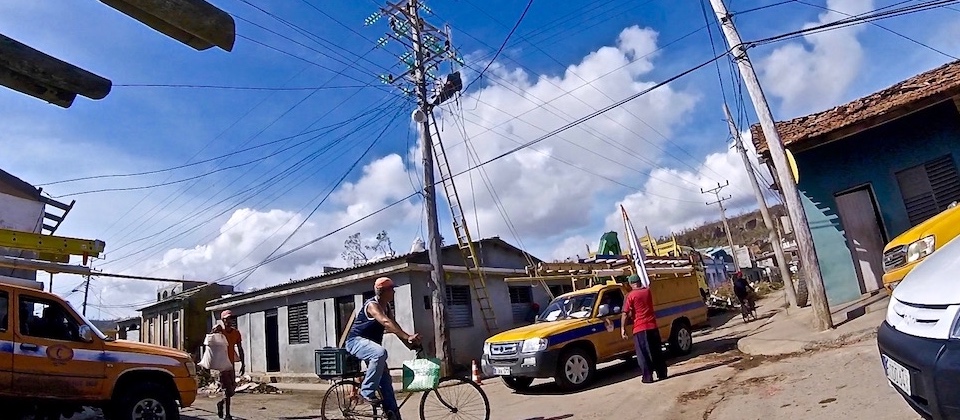
The highest Cuban government authorities, with President Raúl Castro leading them, made themselves present and several national officials remained in Baracoa for months, overseeing the recovery process.
Large power generators were brought in to allow the population to charge phones, tablets, laptops so they could communicate with their loved ones in other provinces and countries.
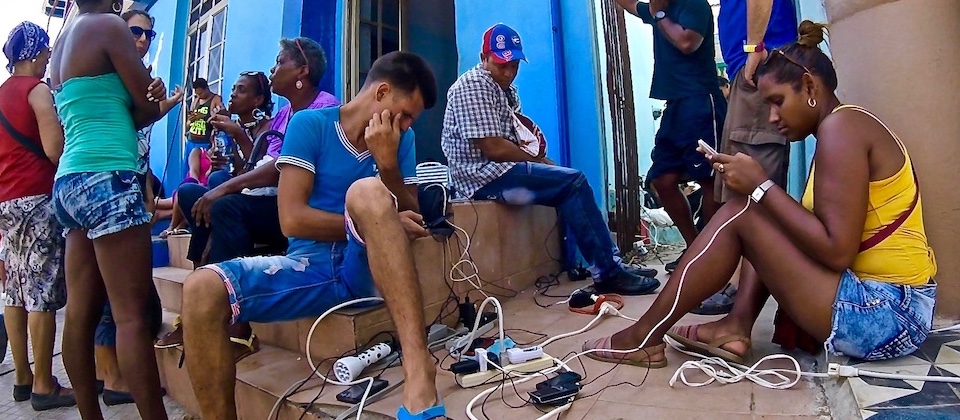
One of the highest priorities was to organize so children would get back to school promptly. Indeed, 96% of schools and day care facilities were damaged by Matthew. In some cases, it was necessary to temporarily set up classrooms in homes. Six months later, only a handful of educational facilities are still to be repaired.
Two words portray Baracoans since that fatidic day till today – resilience and solidarity.
Tourism during and after Matthew
In the context of hurricane Matthew, the government offered protection, safety and assistance to tourists from the start. Those who were in Baracoa during the hurricane were subsequently evacuated in buses to Santiago de Cuba and from there, via plane all the way to Havana. All of it at no charge, of course.
Matthew had a considerable impact on various areas of the region’s economy: coconut, cocoa and coffee. For its part, tourism will play a key role in Baracoa’s recovery, and there have been major, quick investments in this field.
Hospitality infrastructure and cultural venues
As early as November 2016 hotels and casas particulares have been hosting travellers as usual.
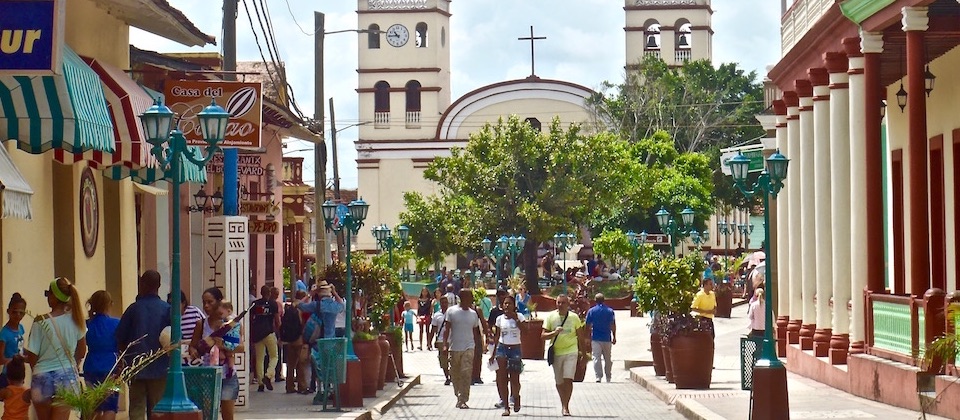
At the historic centre, recovery work was a priority. Red roof tiles were sent in from Granma and other provinces. Cultural venues such as the Eliseo Osorio Art Gallery were renovated and in some cases such as Casa de la Trova, expanded. The streets in the oldest city quarters show today the joyous colours of fresh paint.
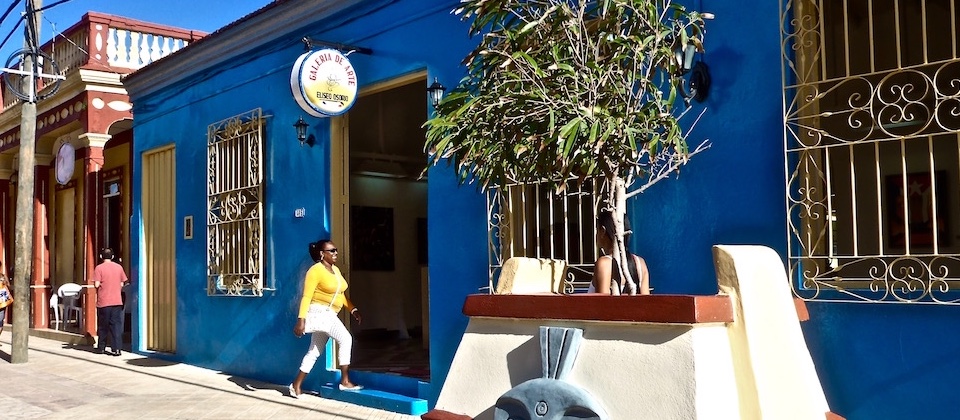
Access to town and surrounding attractions
The bridge over river Toa, connecting Baracoa with Maguana beach and Holguin province, was torn down as a result of the high levels of water brought about by Matthew’s rainfall.
A few months ago a provisory bridge was built to allow transit from one side of the river to the other. However, whenever there is significant rain the bridge can be temporarily under water. You should inquire about this before deciding to make the trip to Baracoa by land from Holguin, Guardalavaca and Moa.
Access to Baracoa via La Farola from Santiago de Cuba and Guantanamo City has remained open at all times, even since the days immediately after the hurricane.
At this moment, thanks to Venezuela’s solidarity, a new bridge over rover Toa is being built. Completing this project will take at least 8 months.
Natural parks and protected areas
Although the flora was deeply impacted by the hurricane, the good climate in Baracoa (the region with the highest rainfall levels in all of Cuba) is working wonders in only a few months.
It is true that you still see the tree trunks that Matthew brought down everywhere, but the ubiquitous green of plants, ferns, trees and palm trees has been rapidly gaining terrain.
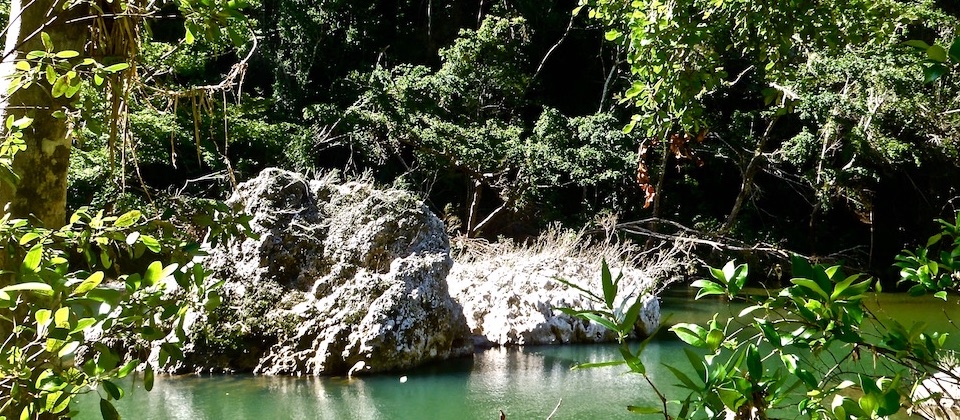
Everyday groups of visitors leave from Baracoa towards Alexander Humboldt National Park, to mount El Yunque and river Duaba waterfalls, to Maguana and El Manglito beach and the Yumurí Canyon. The latter shows signs of an amazing recovery, as you can see in this video from January 3rd, 2017.
Coconut and cocoa – the soul of Baracoa’s culinary culture
Matthew affected 35,681 hectares of agricultural land, bringing down over 90% of coconut palm trees. A newly planted coconut tree takes about 4 years before bearing fruit.
Local experts have identified the coconut varieties that develop more rapidly – and reforestation is underway with brio.
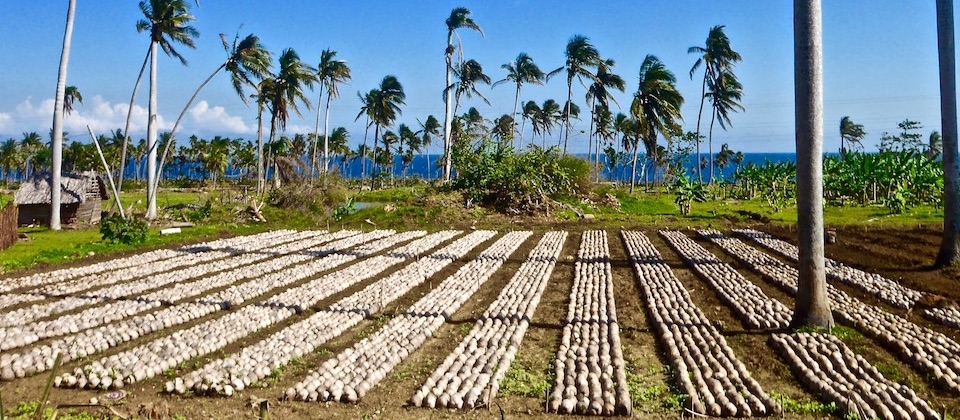
For its part, cocoa is a low height tree and it didn’t suffer as much damage from the hurricane’s winds. But it needs shade in order to bloom and bear fruit – and the trees that provided such shade did sustain important damages.
Medium height, rapid growth trees have been planted, such as banana trees in view of providing shade as soon as possible. To date 89% of the damaged cocoa areas have been rehabilitated.
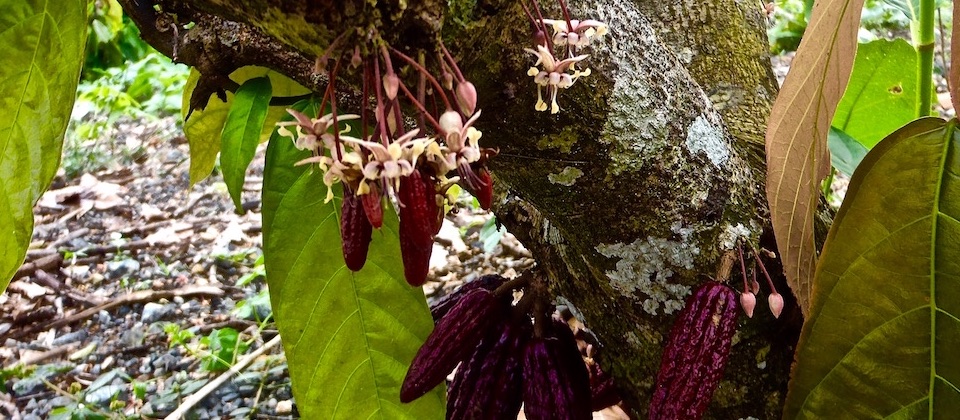
Cuban solidarity, international solidarity
The first, most rapid and very generous solidarity reactions came from the Cuban people themselves. Across provinces, people collected clothes and food for hurricane victims.
Several countries have responded sending help to Cuba. On top of rebuilding the bridge over river Toa, Venezuela has sent ships with containers full of construction materials and built homes for families in the most affected zones.
Various United Nations system agencies have conducted work in the affected areas, in coordination with the Cuban government. UN representatives have underscored the rapid and significant recovery accomplished by our country’s authorities.
Tourists’ solidarity
A large number of travellers have continued to visit Baracoa over the past few months. Many of them have said that they wanted to come to our region precisely because they knew their visit would bring in a bit of help to the income needed for recovery.
We are grateful to these travellers who embody a humanitarian, solidarity tourism – the beauty of our lands and the warmth of our people will have rewarded them!
Coda – visual arts and music for recovery
Several Cuban artists gave their time, souls and hearts to the people of Baracoa and other municipalities affected by Matthew.
Famous Cuban plastic arts practitioner Kcho spent long weeks in rural zones, carrying community and artistic work with local folk. Hand in hand with the population, Kcho rebuilt and beautified a small theatre scene in Yumurí and an elementary school in La Rencontra.
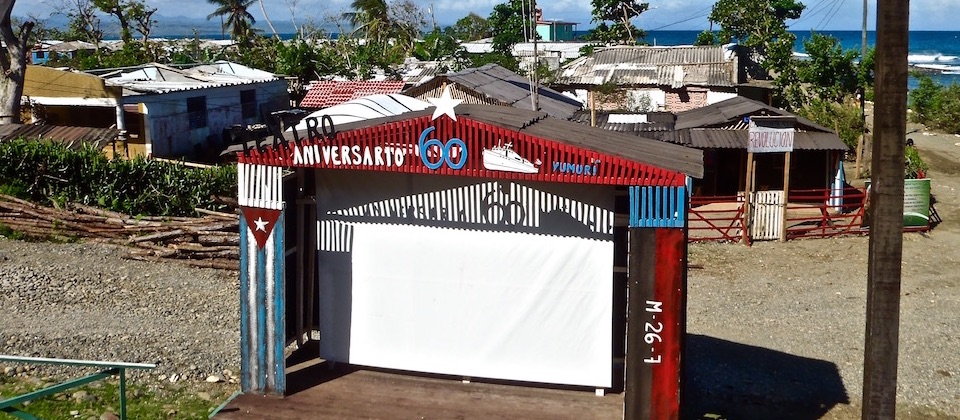
For his part, troubadour Raúl Torres brought his music to several small towns in Baracoa and wrote this joyful song – a call to get up on your feet, roll up your sleeves and get on with the reconstruction!
There’s still work to be done in all 4 municipalities affected by Matthew before one can say the recovery is complete. But the efforts deployed and the rapidpace of the works undertaken have lead to remarkable results. Baracoa is ready and waits for you with its legendary warmth!
Tags: Culture, Forests, History, Nature Tourism

Leave a Reply